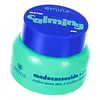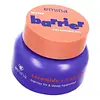What's inside
What's inside
 Key Ingredients
Key Ingredients

 Benefits
Benefits

 Concerns
Concerns

 Ingredients Side-by-side
Ingredients Side-by-side

Water
Skin ConditioningNiacinamide
SmoothingDipropylene Glycol
HumectantButylene Glycol
HumectantPropanediol
SolventCarbomer
Emulsion Stabilising1,2-Hexanediol
Skin ConditioningAllantoin
Skin ConditioningPanthenol
Skin ConditioningAminomethyl Propanol
BufferingAmmonium Acryloyldimethyltaurate/Vp Copolymer
Chlorphenesin
AntimicrobialBiosaccharide Gum-2
Skin ConditioningCaprylhydroxamic Acid
Disodium EDTA
Centella Asiatica Extract
CleansingPhenoxyethanol
PreservativeMadecassoside
AntioxidantPEG-8
HumectantPentylene Glycol
Skin ConditioningBeta-Glucan
Skin ConditioningSalicylic Acid
MaskingCaprylyl Glycol
EmollientIsostearamidopropyl Ethyldimonium Ethosulfate
Sodium Hydroxide
BufferingPropylene Glycol
HumectantCarthamus Tinctorius Seed Oil
MaskingOlea Europaea Fruit Oil
MaskingWater, Niacinamide, Dipropylene Glycol, Butylene Glycol, Propanediol, Carbomer, 1,2-Hexanediol, Allantoin, Panthenol, Aminomethyl Propanol, Ammonium Acryloyldimethyltaurate/Vp Copolymer, Chlorphenesin, Biosaccharide Gum-2, Caprylhydroxamic Acid, Disodium EDTA, Centella Asiatica Extract, Phenoxyethanol, Madecassoside, PEG-8, Pentylene Glycol, Beta-Glucan, Salicylic Acid, Caprylyl Glycol, Isostearamidopropyl Ethyldimonium Ethosulfate, Sodium Hydroxide, Propylene Glycol, Carthamus Tinctorius Seed Oil, Olea Europaea Fruit Oil
Water
Skin ConditioningNiacinamide
SmoothingDipropylene Glycol
HumectantTrisiloxane
Skin ConditioningGlycerin
HumectantAmmonium Acryloyldimethyltaurate/Vp Copolymer
Dimethicone
EmollientButylene Glycol
Humectant1,2-Hexanediol
Skin ConditioningHydroxyacetophenone
AntioxidantButyrospermum Parkii Butter
Skin ConditioningPentylene Glycol
Skin ConditioningDimethicone/Vinyl Dimethicone Crosspolymer
Skin ConditioningGlycereth-20
HumectantDisodium EDTA
Carbomer
Emulsion StabilisingAmodimethicone
Polysorbate 20
EmulsifyingSodium Hydroxide
BufferingAcrylates/C10-30 Alkyl Acrylate Crosspolymer
Emulsion StabilisingAllantoin
Skin ConditioningPotassium Hydroxide
BufferingPhenoxyethanol
PreservativeBeta-Glucan
Skin ConditioningTitanium Dioxide
Cosmetic ColorantSodium Lauroyl Lactylate
EmulsifyingCaprylyl Glycol
EmollientSodium Hyaluronate
HumectantParfum
MaskingCeramide NP
Skin ConditioningCeramide AP
Skin ConditioningPhytosphingosine
Skin ConditioningCholesterol
EmollientHydrolyzed Hyaluronic Acid
HumectantXanthan Gum
EmulsifyingEthylhexylglycerin
Skin ConditioningCeramide EOP
Skin ConditioningWater, Niacinamide, Dipropylene Glycol, Trisiloxane, Glycerin, Ammonium Acryloyldimethyltaurate/Vp Copolymer, Dimethicone, Butylene Glycol, 1,2-Hexanediol, Hydroxyacetophenone, Butyrospermum Parkii Butter, Pentylene Glycol, Dimethicone/Vinyl Dimethicone Crosspolymer, Glycereth-20, Disodium EDTA, Carbomer, Amodimethicone, Polysorbate 20, Sodium Hydroxide, Acrylates/C10-30 Alkyl Acrylate Crosspolymer, Allantoin, Potassium Hydroxide, Phenoxyethanol, Beta-Glucan, Titanium Dioxide, Sodium Lauroyl Lactylate, Caprylyl Glycol, Sodium Hyaluronate, Parfum, Ceramide NP, Ceramide AP, Phytosphingosine, Cholesterol, Hydrolyzed Hyaluronic Acid, Xanthan Gum, Ethylhexylglycerin, Ceramide EOP
Ingredients Explained
These ingredients are found in both products.
Ingredients higher up in an ingredient list are typically present in a larger amount.
1,2-Hexanediol is a synthetic liquid and another multi-functional powerhouse.
It is a:
- Humectant, drawing moisture into the skin
- Emollient, helping to soften skin
- Solvent, dispersing and stabilizing formulas
- Preservative booster, enhancing the antimicrobial activity of other preservatives
Allantoin is a soothing ingredient known for its protective and moisturizingg properties. Because of this, it is often added to products with strong active ingredients.
Studies show higher concentrations of this ingredient can promote wound healing.
Though it can be derived from the comfrey plant, allantoin is produced synthetically for cosmetic products to ensure purity.
Learn more about AllantoinAmmonium Acryloyldimethyltaurate/Vp Copolymer (let's call it AAVC for short) is a synthetically created polymer. It's used as a film-forming agent and used to thicken the consistency of products.
AAVC is able to increase the consistency and viscosity of products due to its large molecule size. It also prevents ingredients from separating.
Beta-Glucan is a polysaccharide. It can be derived from the cell walls of seaweed, oats, yeast, and fungi. It hydrates the skin and helps boost your skin's natural barrier.
As an antioxidant, beta-glucan helps fight free-radicals. Free-radicals are molecules that may damage your skin cells, such as pollution.
Studies show this ingredient may be an effective wrinkle reducer as it can deeply penetrate into skin. It has also been show to help with wound healing.
Learn more about Beta-GlucanButylene Glycol (or BG) is used within cosmetic products for a few different reasons:
Overall, Butylene Glycol is a safe and well-rounded ingredient that works well with other ingredients.
Though this ingredient works well with most skin types, some people with sensitive skin may experience a reaction such as allergic rashes, closed comedones, or itchiness.
Learn more about Butylene GlycolCaprylyl Glycol is a humectant and emollient, meaning it attracts and preserves moisture.
It is a common ingredient in many products, especially those designed to hydrate skin. The primary benefits are retaining moisture, skin softening, and promoting a healthy skin barrier.
Though Caprylyl Glycol is an alcohol derived from fatty acids, it is not the kind that can dry out skin.
This ingredient is also used as a preservative to extend the life of products. It has slight antimicrobial properties.
Learn more about Caprylyl GlycolCarbomer is a polymer of acrylic acid. Its main role is to create a gel consistency.
A high amount of carbomer can cause pilling or balling up of products. Don't worry, most products contain 1% or less of carbomer.
Dipropylene Glycol is a synthetically created humectant, stabilizer, and solvent.
This ingredient helps:
Dipropylene glycol is technically an alcohol, but it belongs to the glycol family (often considered part of the ‘good’ alcohols). This means it is hydrating and gentle on skin unlike drying solvent alcohols like denatured alcohol.
As a masking agent, Dipropylene Glycol can be used to cover the smell of other ingredients. However, it does not have a scent.
Studies show Dipropylene Glycol is considered safe to use in skincare.
Learn more about Dipropylene GlycolDisodium EDTA plays a role in making products more stable by aiding other preservatives.
It is a chelating agent, meaning it neutralizes metal ions that may be found in a product.
Disodium EDTA is a salt of edetic acid and is found to be safe in cosmetic ingredients.
Learn more about Disodium EDTANiacinamide is a multitasking form of vitamin B3 that strengthens the skin barrier, reduces pores and dark spots, regulates oil, and improves signs of aging.
And the best part? It's gentle and well-tolerated by most skin types, including sensitive and reactive skin.
You might have heard of "niacin flush", or the reddening of skin that causes itchiness. Niacinamide has not been found to cause this.
In very rare cases, some individuals may not be able to tolerate niacinamide at all or experience an allergic reaction to it.
If you are experiencing flaking, irritation, and dryness with this ingredient, be sure to double check all your products as this ingredient can be found in all categories of skincare.
When incorporating niacinamide into your routine, look out for concentration amounts. Typically, 5% niacinamide provides benefits such as fading dark spots. However, if you have sensitive skin, it is better to begin with a smaller concentration.
When you apply niacinamide to your skin, your body converts it into nicotinamide adenine dinucleotide (NAD). NAD is an essential coenzyme that is already found in your cells as "fuel" and powers countless biological processes.
In your skin, NAD helps repair cell damage, produce new healthy cells, support collagen production, strengthen the skin barrier, and fight environmental stressors (like UV and pollution).
Our natural NAD levels start to decline with age, leading to slower skin repair, visible aging, and a weaker skin barrier. By providing your skin niacinamide, you're recharging your skin's NAD levels. This leads to stronger, healthier, and younger looking skin.
Another name for vitamin B3 is nicotinamide. This vitamin is water-soluble and our bodies don't store it. We obtain Vitamin B3 from either food or skincare. Meat, fish, wheat, yeast, and leafy greens contain vitamin B3.
The type of niacinamide used in skincare is synthetically created.
Learn more about NiacinamidePentylene glycol is typically used within a product to thicken it. It also adds a smooth, soft, and moisturizing feel to the product. It is naturally found in plants such as sugar beets.
The hydrophilic trait of Pentylene Glycol makes it a humectant. As a humectant, Pentylene Glycol helps draw moisture from the air to your skin. This can help keep your skin hydrated.
This property also makes Pentylene Glycol a great texture enhancer. It can also help thicken or stabilize a product.
Pentylene Glycol also acts as a mild preservative and helps to keep a product microbe-free.
Some people may experience mild eye and skin irritation from Pentylene Glycol. We always recommend speaking with a professional about using this ingredient in your routine.
Pentylene Glycol has a low molecular weight and is part of the 1,2-glycol family.
Learn more about Pentylene GlycolPhenoxyethanol is a preservative that has germicide, antimicrobial, and aromatic properties. Studies show that phenoxyethanol can prevent microbial growth. By itself, it has a scent that is similar to that of a rose.
It's often used in formulations along with Caprylyl Glycol to preserve the shelf life of products.
Sodium Hydroxide is also known as lye or caustic soda. It is used to adjust the pH of products; many ingredients require a specific pH to be effective.
In small amounts, sodium hydroxide is considered safe to use. However, large amounts may cause chemical burns due to its high alkaline.
Your skin has a natural pH and acid mantle. This acid mantle helps prevent harmful bacteria from breaking through. The acid mantle also helps keep your skin hydrated.
"Alkaline" refers to a high pH level. A low pH level would be considered acidic.
Learn more about Sodium HydroxideWater. It's the most common cosmetic ingredient of all. You'll usually see it at the top of ingredient lists, meaning that it makes up the largest part of the product.
So why is it so popular? Water most often acts as a solvent - this means that it helps dissolve other ingredients into the formulation.
You'll also recognize water as that liquid we all need to stay alive. If you see this, drink a glass of water. Stay hydrated!
Learn more about Water